In the realm of enchanting woods, there is one kind more compelling than others for guitar aficionados. It’s the only one that grows exclusively on one chain of volcanic islands in the Pacific – Koa, the precious art of Hawaii. This almost mystical tonewood is not just visually stunning but also responsible for the stunning tonal range of the guitars it graces. Now, let’s take a journey into the depths of understanding Koa wood guitars together.
As someone researching and crafting stringed instruments since 1994, I’ve grown fond of several varieties of tonewood. But none have intrigued and impressed me quite as much as Koa. Its striking beauty aside, the auditory magic it lends to an acoustic guitar stands on a plateau of its own. And the nuances reveal themselves only when you delve deep into the characteristics, comparisons, and maintenance of these exquisite instruments.
Whether you’re a seasoned guitarist pondering a switch to a Koa wood guitar or an enthusiast who is merely curious, this guide will lead you on a fascinating exploration. So steady yourself for an enlightening journey through the world of Koa and its integration in creating some of the most sought-after guitars. Let us demystify Koa’s singular allure and how you can make the most out of it.
Characteristics of Koa Wood
Visual Appeal of Koa
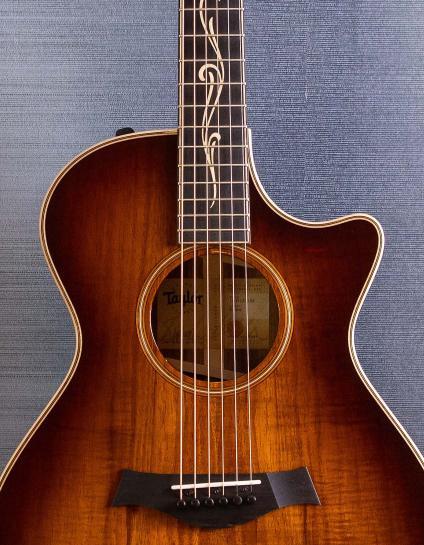
As we explore the characteristics of koa wood, a particular aspect that stands out is the visual appeal of koa. Reflecting on my first encounter with this remarkable timber, I was instantly captivated by its unique beauty. Koa has a naturally spectacular palette, showcasing hues ranging from brilliant gold to deep chocolate-browns, often streaked with hints of red or black. This excess of richness is beautifully contrasted by the striking grain patterns, further amplifying its visual interest.
A unique attribute is koa’s color deepening over time, conveying a more profound, richer aesthetic as the years roll by. This graceful ageing aspect is part of the charm that so mesmerizes and enchants lovers of koa wood. For me, this enchantment began with that first glance at a koa guitar, its impressive visual appeal leaving an indelible imprint.
Craftsmen and musicians alike covet koa wood due to its visually stunning attributes. These aesthetic qualities contribute significantly to the desirability and ultimate value of koa wood guitars. The allure of the visual appeal of koa is indeed a defining characteristic that sets this timber apart. As we progress, I trust you’ll come to appreciate the many splendid aspects of koa, from its tonal attributes to its practical applications in guitar making, and beyond.
Tonal Qualities of Koa
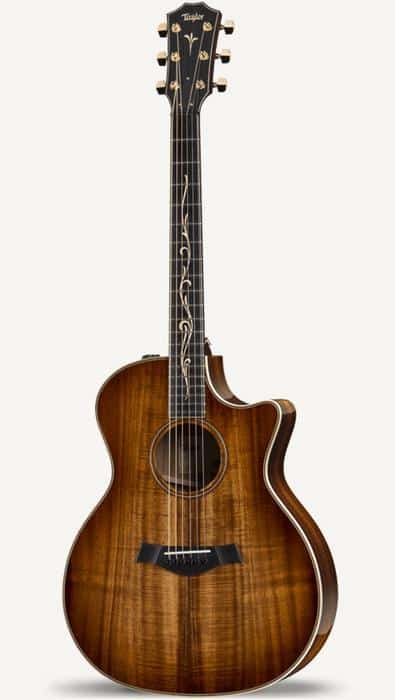
Building upon years of hands-on experience, I can confidently attest that the tonal qualities of koa are unrivaled in the world of tonewoods, making the koa guitar sound recognizable and cherished by musicians worldwide.
One of koa’s defining tonal attributes lies in its balance: it offers warm lows, clear and punchy mids, and crisp highs. It aptly combines the best of mahogany’s mellowness with the sharp clarity of maple. Interestingly, koa’s tonal profile is not static. Rather, it evolves over time – a quality termed ‘ageing’. As a koa guitar matures, it reaches a tonal sweet spot making it sound better with age. The wood’s density and rigidity contribute to sustain and projection, allowing notes to ring out beautifully.
The specific koa guitar sound adds remarkable texture and complexity to any music style, making it a versatile choice for a wide spectrum of artists. But, with its emphasis on mid-range frequencies, koa shines particularly in the blues and fingerstyle genres. Its uniquely rich tonality creates a captivating aural experience, adding depth and color to the overall sound.
Simply put, koa’s tonal qualities make it a favorite among guitar enthusiasts. The sounds it can produce are as beautiful and diverse as the grain patterns exhibited by the wood itself. The world of tonewoods is certainly richer for its contribution.
Now that we’ve touched upon the visual and tonal characteristics of koa wood, let’s continue exploring its versatility as we delve into its application in guitar making.
Uses of Koa Wood in Guitar Making
Koa in Acoustic Vs Acoustic-Electric Guitars
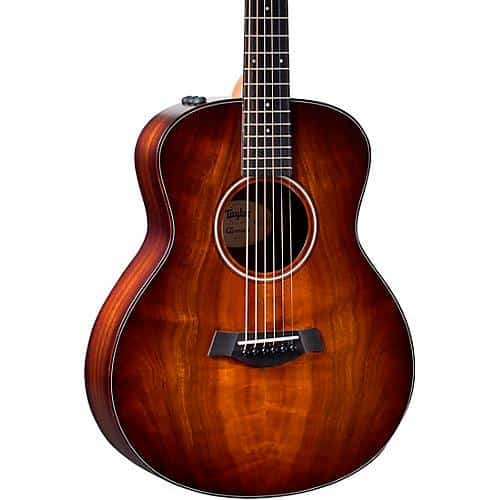
As someone who’s crafted both acoustic and acoustic-electric guitars out of koa, I appreciate its impact on sound and performance. Koa’s relevance is undeniably significant, as it effectively contributes to the resonance and tone of these instruments. Interestingly, the use of koa impacts acoustic and acoustic-electric guitars quite differently.
In an acoustic guitar, koa produces a warm tone and richer low-end, gaining brightness and clarity as the wood ages. The unique tonal spectrum that koa offers has attracted guitar makers and music enthusiasts alike for generations. My years of experience have shown that koa confers a clarity and fullness of sound that is ideally suited for rhythm playing in acoustic settings.
On the other hand, subtle nuances of koa’s tone get amplified in an acoustic-electric guitar. The electronic pickup system in these guitars brings out the best from koa’s tonal characteristics—an appealing factor among guitarists who prefer playing plugged-in. The warm lows, strong mids, and sparkly highs contribute a balanced and well-rounded sound. It’s this versatility of koa in acoustic-electric guitars that makes it a favorite choice for performers across genres.
Whether for acoustic or acoustic-electric, no wood captures musical expression quite like koa. Its unique properties have cemented its place in guitar making history, and it’s a privilege to add its tradition to my own craftsmanship.
Koa in Other Musical Instruments
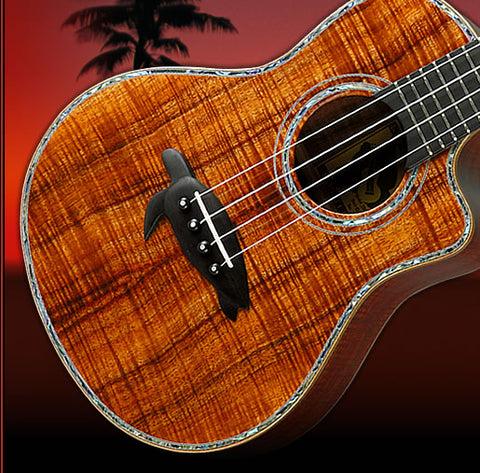
Having dissected Koa’s role in guitar making, it’s fascinating to recognize the proliferation of Koa in other musical instruments. A profound example being the Koa ukulele, a staple of Hawaiian culture, beautifully harnesses the sonorous qualities of Koa wood to produce a warm, full sound that complements its petite size.
As a luthier, the inherent versatility of Koa allows me to craft a diverse range of instruments that each carry a distinct tonal signature. The uniqueness of a Koa ukulele’s tone, for instance, is indeed due in part to its small size and construction, but significantly owed to Koa’s vibrational properties. Its resonant warmth and clear, sweet tone culminate in an intimate musical experience that’s hard to replicate using any other tonewood.
By incorporating Koa into various stringed instruments, we’re able to extend the reach of its charismatic acoustic properties. As our sonic journey continues into an exploration of Koa versus other tonewoods, remember the charm of the Koa ukulele, serving as a testament to Koa’s versatility. Doing so broadens our understanding and appreciation of this remarkable wood in the context of guitar making and beyond.
Comparison of Koa With Other Tonewoods
Solid Koa Vs Koa Veneer
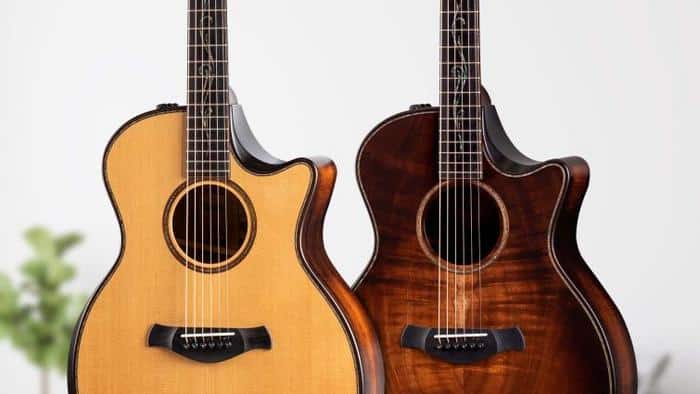
Reflecting on my engineering background that ignited a fascination in material variations, I find the comparison between solid koa vs koa veneer particularly intriguing. The impact of these different forms of wood on sound production and overall aesthetics is of significant consideration.
Solid koa guitars, crafted from carefully selected, high-quality koa lumber, produce extremely rich and sweet tones that evolve with age. The gradual maturation of this solid wood type results in an amplified resonance, making for guitars that grow tonally richer with each strum. They render an aesthetic nobility too, with their naturally vibrant and curly grain patterns radiating from every angle.
Their lightweight yet sturdy counterparts, koa veneer guitars, are typically formed from a less expensive wood base that’s topped with a thin, ornamental layer of koa. This veneer aesthetic grants more affordability without compromising the enticing visual appeal that comes with authentic koa. Although not as resonant or robust as solid koa, when crafted carefully, they can still produce commendable tonal output, holding their stead in the realm of musical instruments.
For a more embellished visual preference, there’s the option of curly koa lumber. This variation is even more striking with its wavy grain structure, making it a favored choice for those who value form as much as function.
Studying these variations, I believe these comparisons of koa provide a lens to better appreciate the diverse qualities, uses, and aesthetics offered by different koa tonewoods. As we journey deeper into the world of koa wood guitars, let’s also explore implications related to sourcing, sustainability, and maintenance, to help us towards making more informed and responsible choices as guitar enthusiasts or collectors.
Koa Wood Sourcing and Sustainability
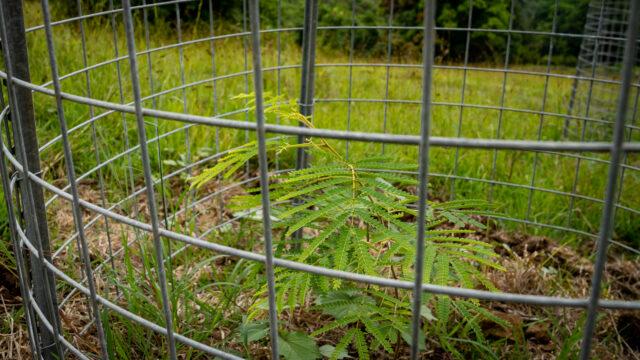
Understanding the complexities of koa wood guitars isn’t just about acknowledging their unique visual appeal, tonal qualities, or the craftsmanship involved in their construction. Another crucial aspect, and one that I find increasingly important in my practice, is the source of the wood itself.
As someone committed to advancing environmentally conscious wood choices, I‘ve spent considerable time focused on the issue of koa wood sourcing and the inherent questions of sustainability. Knowledge, I believe, is power, and arming ourselves with the right information can help us ensure the future of this remarkable wood species for generations to come.
Not all koa wood is created equal – the method of sourcing can significantly impact the sustainability and quality of the final product. This may seem like a bold claim, yet it’s a fact I’ve seen play out time and again. Highly sustainable koa, sourced conscientiously, often bears significant differences in grain, durability, and sound resonance compared to wood extracted with less consideration for the longevity of the trees and the ecosystem they’re part of.
In Hawaii, the native home of the koa tree, the government and many private landowners have taken steps to replenish and protect the koa forests. However, given the staggering demand for koa wood, it’s not just about planting new trees. True koa wood sustainability involves more concerted efforts, including controlled logging and applying ethical farming practices.
One technique I’ve encountered during my research is selective harvesting, where only mature trees are cut down, allowing younger trees to fully mature and reproduce. This guarantees a cycle of growth that ensures koa wood’s future availability. Also noteworthy is the growing trend towards using fallen or dead koa trees, reducing the need for active logging.
One’s respect for music should extend to the raw materials that produce it. In the journey to understand the beauty and charm of koa wood guitars, let’s ensure we also recognize and support environmentally conscious wood sourcing practices that protect this valuable natural treasure.
Taking Care of Koa Wood Guitars
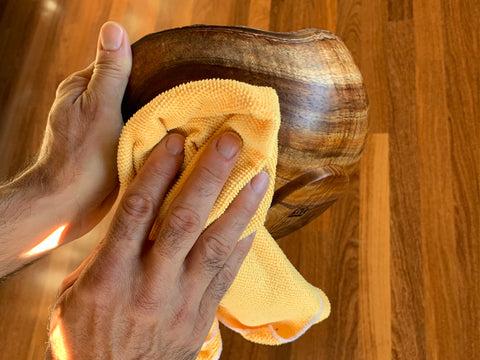
As we move further into our journey with koa wood guitars, let’s now dive into the essential hands-on arena of care and maintenance. From my wealth of experience working with koa and other woods in the realm of guitar crafting, I can assertively tell you that maintaining your instrument is the key to its longevity.
A fundamental aspect of koa guitar care is regular cleaning. Every time you play your guitar, oils and sweat from your skin are transferred to the strings and into the wood. Dust particles too find their way onto the guitar, adding to the gradual buildup that can threaten the guitar’s health over time. As such, swiping your guitar with a soft, damp cloth after every use should be integral to your routine.
Remember to carry out due diligence in oiling your instrument too. This is where the plot thickens, and it’s where I have to make a bold statement. The survival of your prized koa guitar heavily relies on how well you take care of it… and it’s easier than you think. A tiny amount of fretboard oil applied to the fretboard once a year will do wonders for your koa wood guitar. It not only freshens up the wood but also aids in preventing the wood from drying out and cracking, helping to preserve the guitar’s integrity.
The right environment is essential for koa wood care too. Bear in mind that wood is a living, breathing material, susceptible to changes in temperature and humidity. With fluctuating conditions, the wood can warp, shrink, or even crack. Therefore, it’s advisable to keep your koa wood guitar in controlled humidity and temperature conditions. I highly recommend investing in a good quality guitar case, complete with a built-in hygrometer to monitor these conditions.
One of the most beautiful aspects of koa wood is how it ages. The patina that develops over time is a sight to behold, eventually contributing significantly to the tonal character of the guitar. Ensuring a good care regime can help to retain this peak performance. Instrument finishes, for example, not only increase the aesthetic appeal of the guitar but also protect the wood, ensuring that the guitar maintains a long and healthy life.
It’s easy to overlook guitar care as a boring chore or even as an unnecessary task, especially when the instrument seems to be doing just fine. But let me emphasize, it’s this routine care and maintenance that will allow you to preserve the beauty, tone, and value of your koa wood guitar for several lifetimes. Just like any other instrument, a koa guitar is not just a possession. It’s a relationship.
As we’ve journeyed to understand and appreciate the beauty, tone, craft, and care of a koa wood guitar, we see that taking care of it is as much about respecting the artistry and craftsmanship as it is about preserving its longevity. In our following sections, we will delve deeper into this multifaceted koa realm, observing it in different types of guitars and comparing it with other tonewoods. But for now, remember: your koa guitar is unique and precious, in the way it sounds, the way it looks, and consequently, the way it should be cared for.
Guitars Featuring Koa Wood
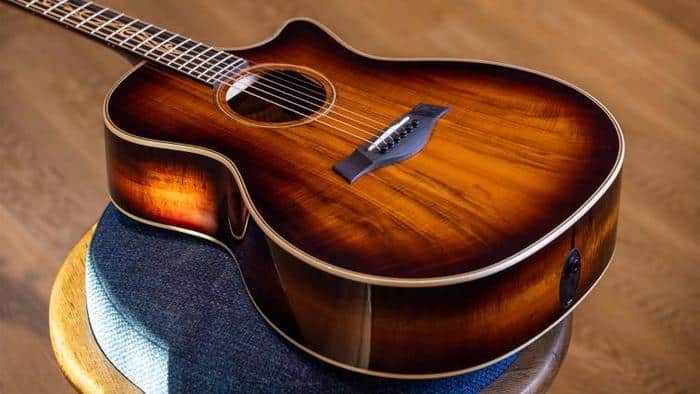
My passion for guitar craftsmanship has had me delving into the minutiae of various guitar species, their unique attributes, combinations, and desired effects. Among these, one variety that has continually piqued my curiosity in various luthier groups I associate with, is the enchanting Koa wood. Over the course of my research and group discussions, I have had the pleasure of examining several beautiful custom Koa guitars, and I’m excited to share a few of these observations with you.
To breathe life into these beautiful art pieces, guitar manufacturers need to understand the essence of Koa wood, as highly as they need to master their craft. They must appreciate the interdependence of form and function, the harmony between the aesthetic elegance the wood offers, and the distinct tonal qualities it fosters, thereby ensuring an unforgettable sensory experience for their customers, the guitar enthusiasts.
Imagine my delight when I discovered that this charming, captivating wood species, Koa, known for its rich amber hues, had found its way into the lineups of some of the most iconic guitar manufacturers. The wealth of warm tones that this wood species has to offer, making it incredibly suitable for both acoustic and acoustic-electric guitars, hasn’t been lost on these manufacturers hard at work at their design tables.
Fascinating Facts: Some of the most iconic guitar manufacturers have featured Koa wood in their signature series.
Yes, you heard correctly. This magnificent Koa wood is not reserved for the custom designs of minor boutique luthiers but is being utilized by grandmasters in the industry. Take a bow, Martin and Taylor guitars, who have both launched long-standing guitar series featuring this exotic Hawaiian wood. Their Koa series guitars have not only caught the attention of guitar lovers across the world but have also cemented the reputation of Koa wood in the mainstream guitar market. These manufacturers have recognized the potential of the Koa, its tonal subtleties, and visual charm, and they have harnessed these attributes phenomenally within their creations.
Proudly standing among their ranks, I had the chance to marvel at one of these works of art personally – a beautiful Taylor guitar featuring Koa wood. The gleaming richness of the Koa wood top was beautifully balanced with the ebony fingerboard and bridge. Yet, as visually captivating as it was, nothing quite compared to that first strum, where the room was filled with the enchanting, warm resonance unique to Koa wood guitars.
And so, my friends, these encounters with Koa wood guitars, whether Taylor or Martin or custom ones crafted with special care by passionate luthiers, only reaffirm the importance of Koa in the guitar universe. Moreover, it underscores the belief that the decision to include Koa wood in our own guitar endeavors, whether for playing or crafting, becomes an indisputable choice, resonating powerfully within our soul, every time our fingers brush those harmonious strings. As we venture further into our exploration on Koa wood guitars, remember these experiences – they serve to ground our discussions in reality, giving context and substance to the theory.
FAQs on Koa Wood Guitars
What are Koa Wood Guitars?
What are the characteristics of Koa Wood Guitars?
How do Koa Wood Guitars compare to other types?
How do I care for my Koa Wood Guitar?
Conclusion
My journey with koa and guitar-making has indeed been enlightening, revealing the intrinsic value that cultural heritage brings to the quality, aesthetics, and sound of musical instruments, like guitars. The characteristics of koa wood, deeply rooted in Hawaiian culture and materials, lend themselves exceptionally well to guitar-making. Witnessing such influence first-hand is a fascinating callback to our earlier intriguing question.
Koa’s visual appeal is as unique as its tonality, which ranges from warm bass tones to crisp highs, depending on its use in acoustic or acoustic-electric guitars. This has led to koa wood being used even beyond guitars, in other musical instruments. The comparison between koa and other tonewoods, as well as solid koa versus koa veneer, casts light on the wood’s versatility and sustainability efforts.
Taking care of koa wood guitars is as rewarding as playing them. The meticulous efforts required are worth the spellbinding looks and sounds these guitars can produce over time. It’s no wonder that various guitars featuring koa wood have been lauded.
As we journeyed through this exploration of Koa wood, I hope the key insights shared about the wood’s incredible qualities, conservation, use in music, and cultural connections resonate as much as a well-played koa wood guitar. A blend of heritage, craftsmanship, and passion, each koa instrument sings a song steeped in the rich tapestry of Hawaiian culture and materials.